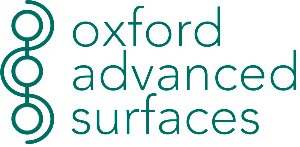Oxford Advanced Surfaces Group Reverses Onto AIM

10th January 2008
The ordinary shares of Oxford Advanced Surfaces Group (OASG) have been admitted to trading on AIM with the ticker symbol OXA following the completion of a reverse takeover of Kanyon Plc.
Oxford Advanced Surfaces Group (OASG)
OASG has developed technology that enables the modification of the surface properties of a range of materials in order to increase and diversify their applications and functionalities. The technology is based on the research of Dr Mark Moloney and team that commenced over ten years ago in the Department of Chemistry at the University of Oxford and can be applied to inert surfaces in order to modify their surface properties. The technology has been licensed by Oxford University Innovation to OASG.
Marcelo Bravo, CEO, said on 31 December 2007, the first day of trading
“We are delighted that OASG has successfully listed on AIM today. We believe that Admission to AIM and the funds available to the company will provide an ideal platform for future growth of the Company. OASG has a strong team and we look forward to the future development of the Company”.
Oxford Advanced Surfaces Group Strategy
The strategy is to become an advanced materials and technology solutions company with business units across a range of markets. The three priority markets for the application of the technology are:
• Electronics (including PCB’s, plastic electronics, electromechanical devices and flat displays);
• Industrial specialties (including specialty fibres, textiles, laminates and composites); and
• Life sciences/health care markets (including sterile surfaces, separation media and microarrays).
Oxford Advanced Surfaces Group Technology
OASG’ technology is a coating technology that exploits a reactive type of molecule, known as a carbene. The technology controls the reactivity of the molecule so that it can be applied to inert surfaces in order to modify their surface properties. The technology is a platform technology that permits the modification of a range of materials to deliver a range of functionalities, thus creating new opportunities in advanced materials.
The coatings are applied to surfaces in a multi-step process. Firstly, the coating is rolled, dipped, painted or sprayed onto the surface and, secondly, the coating is then cured by heat or UV resulting in a chemically attached coating. OAS is working to further develop the technology to enable it to deliver precise patterns of surface functionality and to deliver more than one functionality on a substrate.
The technology enables a range of materials to be modified including:
natural polymers such as cotton and wool;
inert synthetic polymers such as polypropylene, PET and polyimide; and
inorganic surfaces such as glasses, alumina, diamond, graphite and other allotropes of carbon.
Principal applications of the technology
OAS has signed confidentiality agreements with approximately thirty companies to proceed to advanced discussions regarding the technology. This has resulted in OAS signing agreements with seven companies for co-development projects which are currently revenue-earning.
As OAS scales its business development activities, it is the board’s intention that there will be a growth in the number of projects looking at more functionalities and substrate materials in differing areas of application. The initial focus of OAS activities will be in exploiting:
1. Tailored Wetting Properties
The wettability (hydrophillicity, hydrophobicity, oleophillicity and oleophobicity) of a material or the degree to which a material can be wetted by a liquid is an important function for OAS’ customers in a number of applications currently being developed by OAS:
the development of coatings to provide hydrophillicity to fluoropolymers for use in the electronics industry as well as for use in the medical implant industry;
the development of treatments to help disperse particulates such as pigments; and
the development of coatings to provide hydrophobicity to substrate materials used in the electronic displays industry and the inkjet device industry.
2. Adhesion Promotion
OAS is currently using the technology to develop coatings:
to enhance the adhesion between various low surface energy polymers to protective coatings; and
to metallise (“adhere metal”) to various substrates including glass, silica and polymers for application in electronics and the decorative automotive industry.
3. Biocidal Activity
OAS has designed a coating using its technology which permits the release of hydrogen peroxide, an environmentally benign broad spectrum biocide which can be regenerated by treating with a solution of hydrogen peroxide. The board believes this application of the technology could be used in consumer and healthcare markets as well as in water and air purification.
Press release sign up
